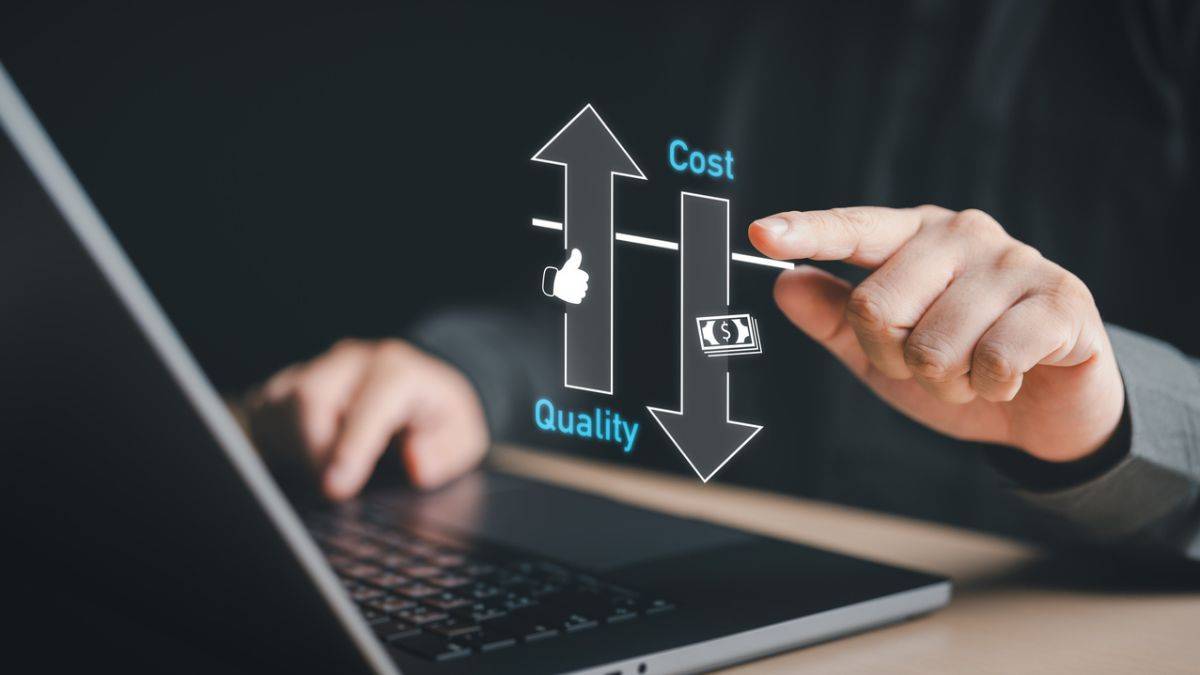Consider a scenario where you’ve spent weeks sifting through resumes, conducting interviews, and deliberating over candidates. Finally, you make the hire, and the new employee joins your team with high hopes and expectations. However, what if you were told that the true cost of this hiring process extends far beyond the initial salary offer? What if a complex web of hidden expenses lurks beneath the surface, ready to impact your organization’s bottom line and long-term success.
In a Harvard Business Review article, Peter Cappelli of Wharton says, “Businesses have never done as much hiring as they do today and have never done a worse job of it.” This stark observation underscores the pressing need for organizations to reassess their hiring practices and adopt more strategic approaches to talent acquisition. With recruitment being more prolific yet less effective than ever before, there’s a growing recognition among researchers, industry experts, and business leaders that traditional methods may no longer suffice in identifying and attracting top talent. This realization has sparked a fervent quest for innovative solutions and best practices to optimize the hiring process and maximize the return on investment in human capital.
Let’s delve into the hidden depths of bad hire expenses as understanding the full extent of the cost of hiring an employee is essential for businesses striving to thrive in today’s fast-paced and competitive landscape.
Understanding the Financial Costs

Based on findings from the Society for Human Resource Management (SHRM), the average expenditure per hire stands at approximately $4,700. Nevertheless, several variables may influence this figure, encompassing factors such as the scale of your enterprise, geographical location, industry sector, and the unique requirements of the position in question. Moreover, costs could escalate further when factoring in “soft costs,” such as the time invested by hiring managers.
When considering the financial costs of hiring, it’s essential to account for more than just the salary or hourly wage. Recruitment expenses, such as advertising, job fairs, and agency fees, can quickly add up. Additionally, there are costs associated with conducting interviews, background checks, and pre-employment assessments. Once a candidate is hired, onboarding and training expenses come into play, including materials, resources, and the time of existing employees involved in the process.
Furthermore, there are indirect costs related to productivity loss as new hires ramp up to full performance levels. During the initial adjustment period, it’s common for productivity to dip as employees acclimate to their roles and responsibilities. This can impact overall team efficiency and output, leading to potential revenue loss or missed opportunities.
It’s helpful to take a deliberate and thorough approach when hiring top-tier employees. However, with a clear understanding of what qualities to seek and how to align recruitment strategies with the appropriate stages of the hiring process, you can optimize efforts in recruitment and retention while also conserving costs.
Considering the Non-Financial Costs

While financial costs are tangible and easier to quantify, the impact of hiring mistakes non-financially can be equally significant, if not more so, for organizations. Numerous studies have shown that poor hiring decisions can have far-reaching implications beyond the immediate financial impact.
A study, conducted by Gallup, found that mismatches in workplace culture and values can result in disengagement among employees. This lack of engagement can lead to decreased productivity, higher turnover rates, and ultimately, diminished organizational performance. Additionally, the study revealed that employees who do not feel aligned with their organization’s culture are more likely to seek opportunities elsewhere, further exacerbating retention challenges for companies.
Furthermore, the impact of hiring mistakes extends to the overall morale and cohesion of the team. Research published in the Journal of Applied Psychology indicates that mismatches in personality and work style can disrupt team dynamics, leading to increased conflict and decreased collaboration. This can create a toxic work environment that undermines employee morale and satisfaction, ultimately affecting organizational culture and productivity.
The Impact of Poor Hiring Decisions

Choosing the right candidate for a job drives businesses forward with renewed energy. However, a poor hiring decision can have significant repercussions. Making informed choices during recruitment is vital. Despite organizational precautions, instances occur where seemingly ideal hires are unfit for their roles. Astonishingly, bad hires are more prevalent than anticipated. As per the Harvard Business Review, only 19% of new hires are deemed entirely successful. By the 18-month mark, 46% are considered failures, either resigning voluntarily or facing termination. According to the Australian Financial Review, the cost of a bad hire is between 15% – 21% more than the employee’s salary, factoring in lost revenue, reduced productivity, and additional resources required for performance management and training.
Consider a scenario: ABC Solutions, a technology consulting firm, was expanding its team to keep up with the demands of its growing client base. With ambitious growth plans, the company was eager to fill several key positions, including a project manager to oversee critical client projects.
Excited to move forward, ABC Solutions rushed through the hiring process for the project manager role, relying heavily on the candidate’s impressive resume and glowing recommendations from previous employers. Despite some initial reservations from the hiring team during the interviews, the candidate’s confident demeanor and apparent experience convinced them to extend an offer.
During the project manager’s notice period, which extended for two months, the position remained vacant, exacerbating the strain on the team and delaying critical project milestones. However, within a few months of the new project manager’s start date, it became clear that they were struggling to meet expectations. Projects were falling behind schedule, communication with clients was lacking, and team morale began to plummet. Despite attempts to provide additional training and support, the project manager continued to underperform, ultimately leading to the loss of several key client accounts.
The organization soon realized the significant financial implications of their bad hiring decision. Beyond the project manager’s salary, which was substantial, the company faced additional costs including:
Resentment and Disruption
When new employees do not align with the organization’s values and culture, it can breed resentment among existing team members, leading to decreased collaboration, communication breakdowns, and reduced productivity.
Reputation Damage
The consequences of poor hiring decisions can permeate the entire organization, affecting the immediate team and the company’s overall reputation, making it challenging to attract and retain top talent.
The impact of poor hiring decisions on organizations cannot be overstated as its consequences reverberate throughout the entire organization. It emphasizes the critical importance of making informed and strategic hiring choices, ensuring that each new addition to the team aligns with the organization’s goals, values, and culture for long-term success and prosperity.
In the fast-paced world of business, the process of hiring new employees is a critical endeavor fraught with complexities and uncertainties. While organizations invest considerable time, effort, and resources into recruiting the right talent, the true cost of hiring extends far beyond financial considerations. Poor hiring decisions can have profound implications for an organization’s bottom line, reputation, and team dynamics. However, by understanding the multifaceted nature of hiring costs and taking proactive measures to mitigate them, businesses can navigate the recruitment landscape with greater confidence and efficiency. The journey of hiring is not merely about filling vacancies—it’s about shaping the future trajectory of the organization and nurturing a workforce poised for excellence and innovation.
https://globaljournals.org/GJMBR_Volume12/6-Impact-of-Personality-Match-Mismatch.pdf
https://www.gallup.com/workplace/391922/employee-engagement-slump-continues.aspx
https://www.linkedin.com/pulse/consequences-poor-hiring-decision-talenthub-recruitment/
https://recruiteze.com/reduce-recruitment-costs/
https://www.turing.com/resources/the-cost-of-a-bad-hire
https://www.businessnewsdaily.com/16562-cost-of-hiring-an-employee.html
https://www.apollotechnical.com/wp-content/uploads/2020/08/cost-of-bad-hire-1024×536.jpg
https://images.shiksha.com/mediadata/images/articles/1706187995php24X8Tn.jpeg
https://www.insperity.com/blog/cost-of-a-bad-hire/
Written By: Dr. Jimmy Jain
Edited By: Afreen Fatima









